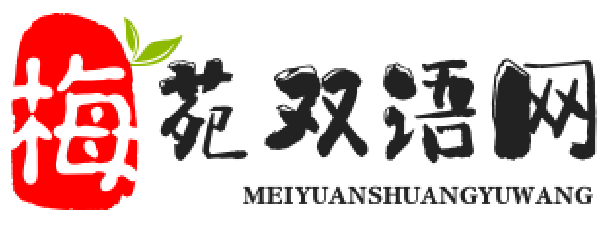下面我将为你提供一个完整的雅思作文备考方案,包括:

- 题目分析:如何拆解题目,确定写作方向。
- 思路拓展:从哪些角度来构思你的论点和论据。
- 高分范文:一篇完整的 band 8.0+ 范文,包含结构、词汇和句式分析。
- 核心词汇与短语:帮助你提升语言水平的“弹药库”。
- 实用句型:可以直接套用的高分句式。
题目分析
“男女平等”这个题目通常以几种形式出现:
-
同意与否
Some people believe that men and women are equal in all aspects. To what extent do you agree or disagree? 一些人认为男女在所有方面都应平等,你在多大程度上同意或不同意?
-
讨论双方观点
Some people think that gender equality has been achieved, while others believe there is still a long way to go. Discuss both views and give your own opinion. 一些人认为性别平等已经实现,而另一些人认为还有很长的路要走,讨论双方观点并给出你自己的看法。
-
利弊分析 / 解决方案
In many countries, women have more rights and better opportunities than before. However, they still face significant challenges. What are the main problems women face in society today? What can be done to solve these problems? 在许多国家,女性比过去拥有更多的权利和更好的机会,她们仍然面临严峻的挑战,当今女性在社会中面临的主要问题是什么?可以采取什么措施来解决这些问题?
写作策略: 无论哪种题型,核心都是要展现深度思考,避免空泛地喊口号,你需要:
- 具体化:不要只说“不平等”,要指出在哪些领域不平等(如薪酬、晋升机会、家务分配、刻板印象等)。
- 多角度:从社会、经济、文化、教育、家庭等多个层面分析。
- 提出解决方案:在讨论问题的题型中,解决方案必须具体、可行。
思路拓展
我们可以围绕以下几个核心观点来构建文章:
支持“尚未完全平等”的观点:
-
职场领域
- 性别薪酬差距:从事相同工作,女性平均薪酬低于男性。
- “玻璃天花板”效应:女性在晋升到高层管理职位时面临无形的障碍。
- 职业隔离:女性更多地集中在护理、教育等“女性化”且薪酬较低的领域,而男性则主导科技、金融等高薪领域。
- 母职惩罚:因生育和育儿,女性在职业发展上常受到负面影响,而男性则很少。
-
家庭与社会领域
- 无偿家务劳动:尽管女性普遍外出工作,但她们仍承担着大部分的家务和育儿责任,这被称为“第二轮班”。
- 性别刻板印象:社会对男女有固定的期望(如“男主外,女主内”),限制了个人选择和发展,鼓励男孩勇敢、坚强,女孩温柔、顺从。
- 性别暴力:家庭暴力、性骚扰等问题依然严峻,受害者多为女性。
-
政治与权力领域
- 代表性不足:在议会、政府高层等决策机构中,女性的比例远低于男性,导致政策可能忽视女性的需求。
支持“进步显著/应平等”的观点:
- 法律与权利保障
许多国家已立法保障男女在就业、教育、继承等方面的平等权利。
- 教育机会均等
在全球大部分地区,女性接受高等教育的机会已与男性相当,甚至在某些国家超过男性。
- 观念的转变
越来越多的男性支持性别平等,愿意分担家庭责任,年轻一代的观念更加开放。
- 女性赋权
女性在创业、领导力、艺术等领域的成就日益突出,证明了女性的潜力。
高分范文 (以 "To what extent do you agree or disagree?" 为例)
** Some people believe that men and women are equal in all aspects. To what extent do you agree or disagree?
范文:
The notion of gender equality has evolved from a radical concept into a widely accepted ideal in modern society. While it is undeniable that significant progress has been made towards levelling the playing field, I firmly disagree with the assertion that men and women are equal in all aspects. In my view, despite legal and educational advancements, deep-rooted social, economic, and cultural disparities continue to hinder the realisation of true parity.
Admittedly, the journey towards equality has seen remarkable milestones. Legally, in most developed nations, women have been granted equal rights in areas such as voting, education, and employment. This has opened doors for women to pursue higher education and enter professions that were once male-dominated. For instance, the growing presence of female doctors, engineers, and CEOs is a testament to these achievements. Furthermore, there is a palpable shift in societal attitudes, with more men embracing domestic responsibilities and championing the rights of women. These developments indicate that the foundation for equality has been firmly established.
However, to claim complete equality would be to overlook the persistent and subtle barriers that women continue to face. Economically, the gender pay gap remains a stark reality. Even when controlling for factors like experience and qualifications, women often earn less than their male counterparts for the same roles. This is compounded by the "motherhood penalty," where women's careers frequently stall or regress after childbirth, a phenomenon far less common for men. Socially, the burden of unpaid domestic labour still disproportionately falls on women. The expectation that they will be the primary caregivers and homemakers creates a "second shift," limiting their professional advancement and personal time. Moreover, ingrained stereotypes about gender roles can influence everything from a child's choice of toys to an adult's career path, subtly confining individuals to predefined boxes.
In conclusion, while we have made laudable strides in the fight for gender equality, it is premature to claim that men and women are equal in all aspects. The lingering economic disadvantages, unequal distribution of domestic duties, and the pervasive influence of traditional gender roles are clear indicators that the battle is not yet won. True equality will only be achieved when these structural and societal inequities are fully addressed, allowing every individual the freedom to thrive regardless of their gender.
核心词汇与短语
积极/支持平等的词汇:
- Gender equality / Gender equity (性别平等/公平)
- Empowerment (赋权)
- Liberation (解放)
- To champion a cause (为事业而战/倡导)
- To break down stereotypes (打破刻板印象)
- To shatter the glass ceiling (打破玻璃天花板)
- To promote inclusivity (促进包容性)
- To level the playing field (创造公平的竞争环境)
描述不平等/问题的词汇:
- Disparity / Gap (差距,差异)
- Discrimination (歧视)
- Inequity / Inequality (不公,不平等)
- Stereotype (刻板印象)
- Prejudice (偏见)
- The gender pay gap (性别薪酬差距)
- The motherhood penalty (母职惩罚)
- The "second shift" (第二轮班,指下班后的家务)
- To be underrepresented (代表性不足)
- To be marginalised (被边缘化)
- To face barriers (面临障碍)
高分动词/短语:
- Hinder / Impede / Obstruct (阻碍)
- Perpetuate (使...持续下去)
- Overlook (忽视)
- Compound (使...恶化;加剧)
- Hinge on (取决于)
- Be attributed to (归因于)
- Give rise to (导致;引起)
实用句型
开头段:
- The issue of... has become a focal point of discussion in contemporary society.
- The debate surrounding... is a complex one, with valid arguments on both sides.
- While it is widely acknowledged that..., the extent to which... remains a contentious issue.
主体段 - 提出观点:
- A primary argument in favour of / against this view is that...
- This is largely due to the fact that...
- A compelling case can be made that... (一个有力的论点是...)
- The crux of the matter lies in... (问题的核心在于...)
主体段 - 举例说明:
- This is exemplified by / can be seen in...
- A case in point is...
- For instance, take the example of...
主体段 - 让步/转折:
- Admitted











